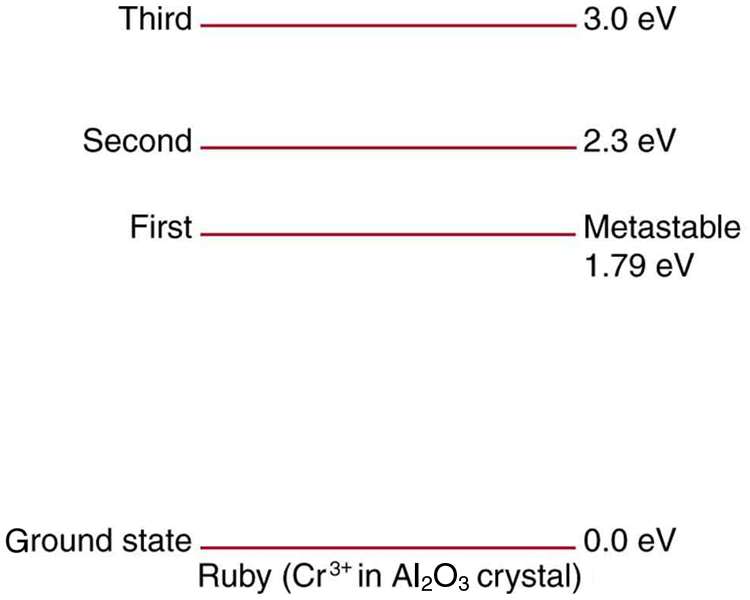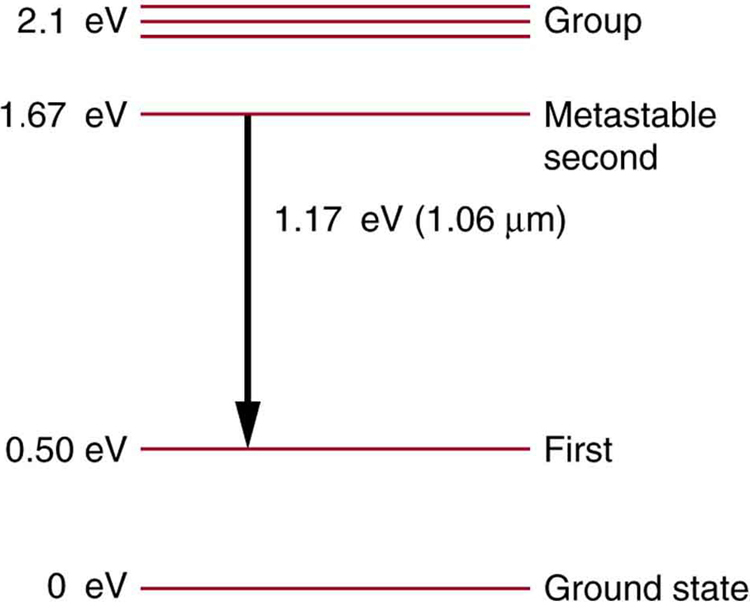| << Chapter < Page | Chapter >> Page > |
Explain what phosphorescence is and how it differs from fluorescence. Which process typically takes longer and why?
An electron is excited from the ground state of an atom (energy level 1) into a highly excited state (energy level 8). Which of the following electron behaviors represents the fluorescence effect by the atom?
(d)
Describe the process of fluorescence in terms of the emission of photons as electron transitions between energy states. Specifically, explain how this process differs from ordinary atomic emission.
How do the allowed orbits for electrons in atoms differ from the allowed orbits for planets around the sun? Explain how the correspondence principle applies here.
Atomic and molecular spectra are discrete. What does discrete mean, and how are discrete spectra related to the quantization of energy and electron orbits in atoms and molecules?
Hydrogen gas can only absorb EM radiation that has an energy corresponding to a transition in the atom, just as it can only emit these discrete energies. When a spectrum is taken of the solar corona, in which a broad range of EM wavelengths are passed through very hot hydrogen gas, the absorption spectrum shows all the features of the emission spectrum. But when such EM radiation passes through room-temperature hydrogen gas, only the Lyman series is absorbed. Explain the difference.
Lasers are used to burn and read CDs. Explain why a laser that emits blue light would be capable of burning and reading more information than one that emits infrared.
The coating on the inside of fluorescent light tubes absorbs ultraviolet light and subsequently emits visible light. An inventor claims that he is able to do the reverse process. Is the inventor’s claim possible?
What is the difference between fluorescence and phosphorescence?
How can you tell that a hologram is a true three-dimensional image and that those in 3-D movies are not?
[link] shows the energy-level diagram for neon. (a) Verify that the energy of the photon emitted when neon goes from its metastable state to the one immediately below is equal to 1.96 eV. (b) Show that the wavelength of this radiation is 633 nm. (c) What wavelength is emitted when the neon makes a direct transition to its ground state?
(a) 1.96 eV
(b)
(c) 60.0 nm
A helium-neon laser is pumped by electric discharge. What wavelength electromagnetic radiation would be needed to pump it? See [link] for energy-level information.
Ruby lasers have chromium atoms doped in an aluminum oxide crystal. The energy level diagram for chromium in a ruby is shown in [link] . What wavelength is emitted by a ruby laser?

693 nm
(a) What energy photons can pump chromium atoms in a ruby laser from the ground state to its second and third excited states? (b) What are the wavelengths of these photons? Verify that they are in the visible part of the spectrum.
Some of the most powerful lasers are based on the energy levels of neodymium in solids, such as glass, as shown in [link] . (a) What average wavelength light can pump the neodymium into the levels above its metastable state? (b) Verify that the 1.17 eV transition produces radiation.

(a) 590 nm
(b)

Notification Switch
Would you like to follow the 'College physics for ap® courses' conversation and receive update notifications?